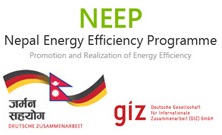Adiabatic and isothermal efficiencies are computed as the isothermal or adiabatic power divided by the actual power consumption. The figure obtained indicates the overall efficiency of compressor and drive motor. Isothermal compression is close to ideal, and with inter and after coolers, the work of compression is optimized with resulting power economy.
Isothermal efficiency
Isothermal Efficiency = Isothermal power/Actual measured input power
Isothermal power (kW) = P1 x Q1 x loger/36.7
Where,
P1 = Absolute intake pressure kg/ cm2
P2 = Absolute delivery pressure kg/ cm2
Q1 = Free air delivered m3/hr.
r = Pressure ratio P2/P1
Isothermal efficiency is normally lower than adiabatic efficiency as it does not consider power needed to overcome friction. Reported value of efficiency is normally the isothermal efficiency.
As an easy reference, indicative specific power consumption values for various compressor types are presented below:
Payback of energy saving options
Experience from the past has shown that implementing energy saving options in compressed air system is highly profitable with payback of investment of less than 3 years.
| Options | Estimated payback period |
|---|---|
| Replace reciprocating air compressors by screw compressors | 2 years |
| Optimize compressed air pressure to process needs | < 1 year |
| Improve performance of inter cooler and after cooler | < 1 year |
| Arrest leakages | < 1 year |
| Install VFDs for capacity control | About 2 years |
| Adopt heat less dryers for compressor air | < 1 year |
| Adopt transvector nozzles for low pressure needs | < 1 year |
| Improve performance of filters, regulator, lubricator in compressed air use | < 1 year |



